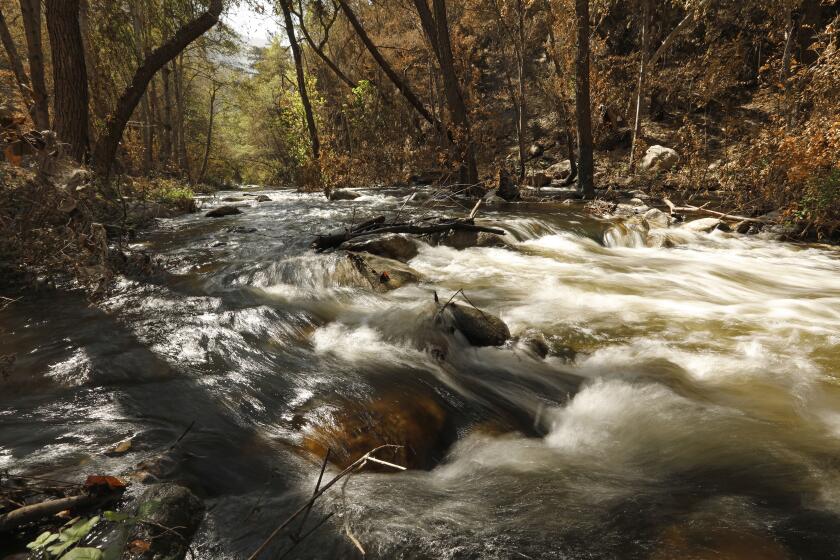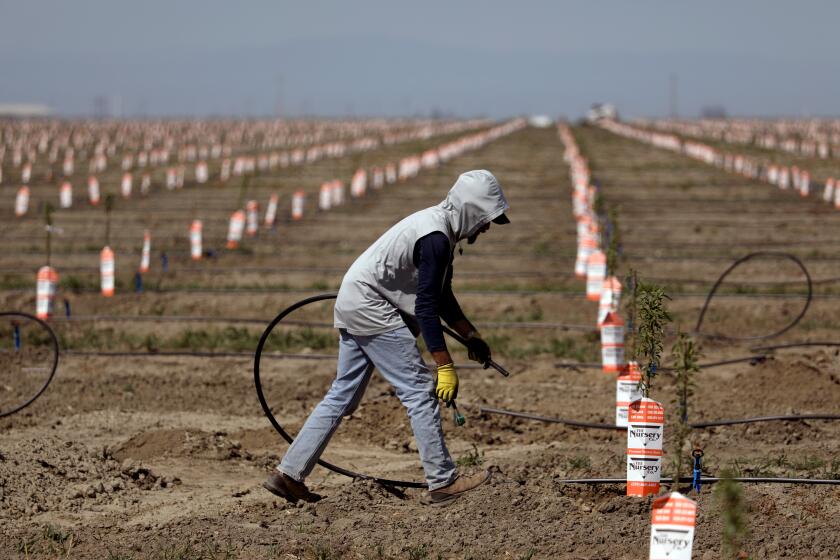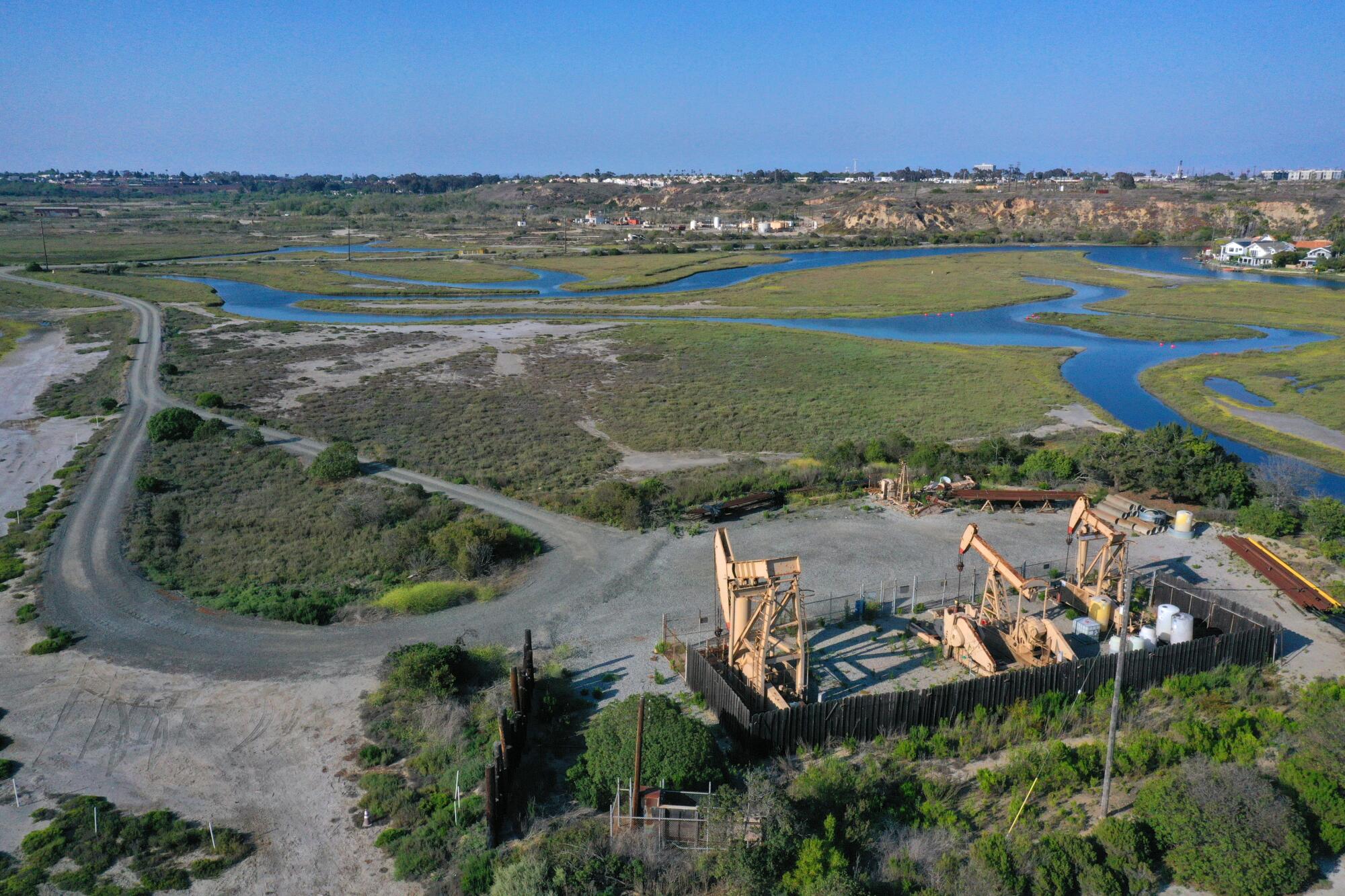
NEWPORT BEACH — High atop the coastal bluffs of Newport Beach, where homes in exclusive neighborhoods list for an average of $3 million, an active oil field of rusting pump jacks, brine tanks and winding dirt roads is giving conservationists new hope for an “immense” and publicly accessible green space.
This could be the year, they say, that the 384-acre Banning Ranch oil field finally becomes a public park and nature preserve.
For the record:
2:33 p.m. May 21, 2021A previous version of this story misidentified Orange County Supervisor Katrina Foley as Kristina.
Bolstered by a $50-million donation from Orange County philanthropists, the Trust for Public Land on Wednesday said it has secured an exclusive agreement to buy the largest chunk of undeveloped coastal real estate left in Southern California.
“With sweeping coastal views and fantastic recreational opportunities, a future park at Banning Ranch could serve 8.4 million people who live within an hour’s drive,” said Diane Regas, president and chief executive of the nonprofit.
Now, in accordance with the agreement, the trust has 12 months to raise the additional $47 million needed to complete the $97-million purchase and begin restoring the environmentally distressed tableau of scarps, vernal pools and mesas that are home to fairy shrimp, peregrine falcons and federally endangered California gnatcatchers.
The designation would ensure the lands remain free of development, vehicles and commercial activity.
The Banning Ranch project reflects a growing environmental consciousness in Southern California regarding open, natural spaces and what they mean for the health of urban residents and the economy.
Undoing the environmental damage done by what was once a star in Orange County’s oil and gas industry won’t be cheap or easy.
But the currents of change coursing through the seaside property north of Pacific Coast Highway were evident on Tuesday, when Guillermo Rodriguez, the Trust for Public Land’s state director, and Paolo Perrone, its project manager for the Southern California region, led a small group of visitors on a rare tour of the facility.
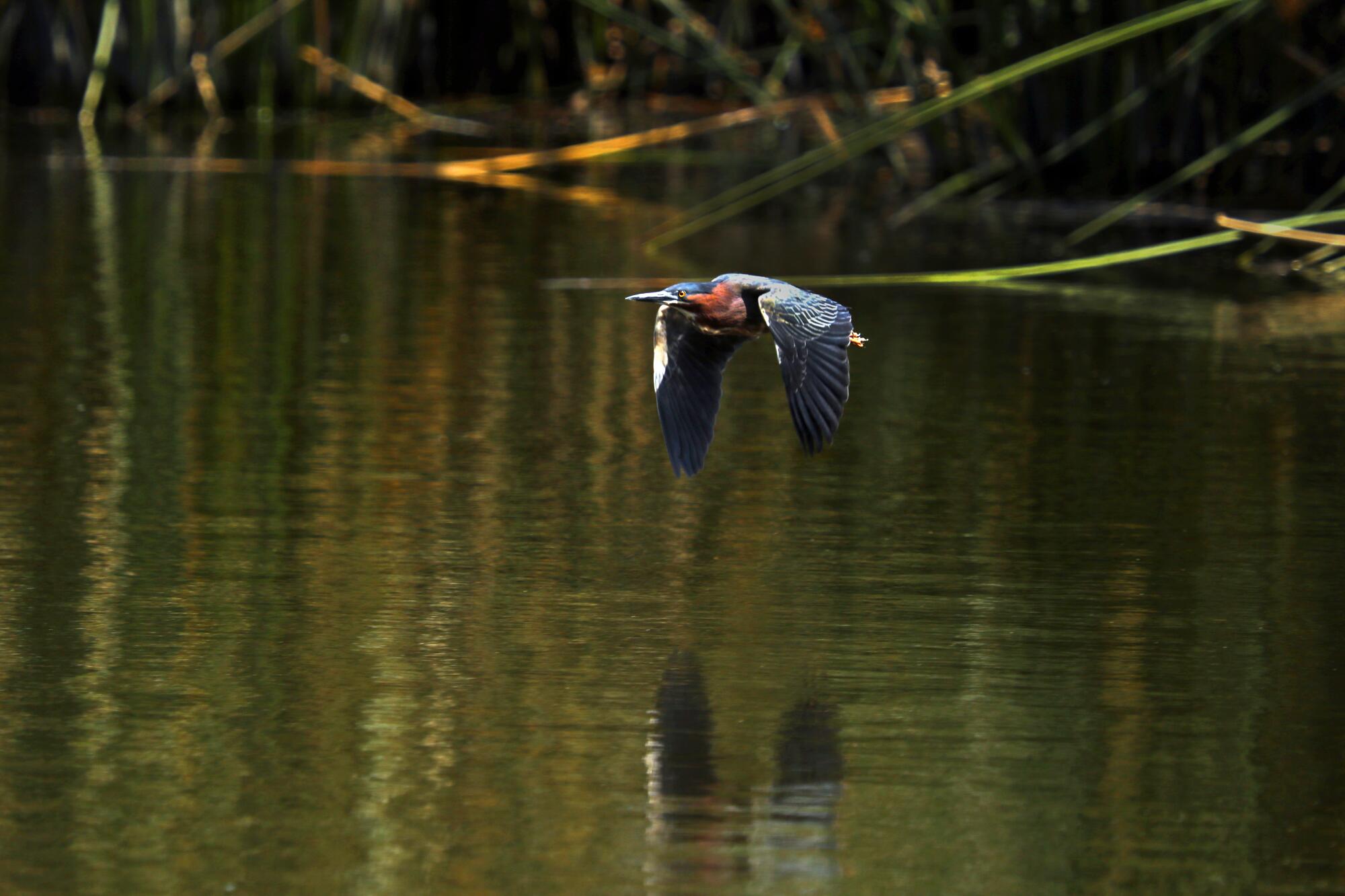
A chain-link fence rimmed with barbed wire surrounds a grimy empire of pipelines and transmission towers that reach into the sky. Much of this aging infrastructure — which covers the property like a spider web — is overgrown with dense stands of mule fat, willows and cattails.
“An urban oasis will soon blossom in a place that has been mired for so long in legal strife and politics,” Rodriguez said.
“People have been waiting a long time for this, an immense new public park and nature preserve with easy access to public transportation and crisscrossed by bike and hiking trails connected to camping and picnic sites with panoramic views of the Pacific Ocean.”
As the San Joaquin Valley braces for yet another season of drought, some growers are openly questioning the future of farming here.
The landowner has already started removing some of the more than 50 wells and four miles of surface-mounted pipeline on the property.
Once the acquisition is complete and the property is remediated, project managers plan to launch the outreach and survey work needed to align the site’s educational, ecological and recreational opportunities with the desires of people in surrounding communities.
Developers have long coveted the ranch; its current owner’s original vision called for industrial parks, office complexes and more than 1,300 homes.
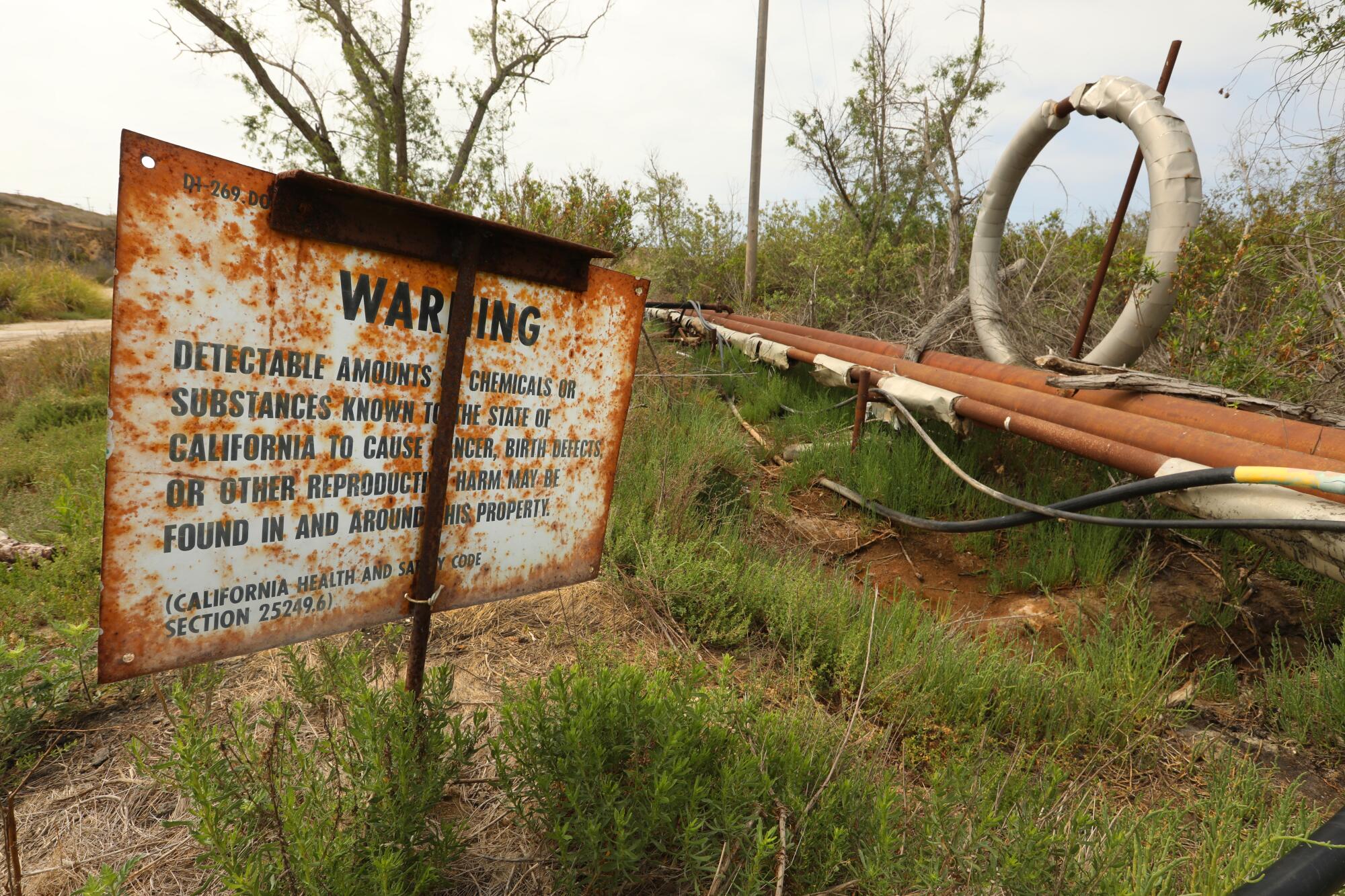
The property has escaped the high-density development of most of nearby Newport Beach, Costa Mesa and Huntington Beach due to its status as a working oil field operated by West Newport Oil/Armstrong Petroleum.
The facility has produced nearly 36 million barrels of oil since the first wells began producing on the former cattle and sheep ranch in 1943.
Cleanup costs are expected to reach many millions of dollars.
In November 2006, Newport Beach voters approved a General Plan prioritizing the acquisition of Banning Ranch as an open space amenity for the community and the region.
The nonprofit Banning Ranch Conservancy suggests that it will be an ideal place to study the impacts of climate change and rising sea levels.
Protecting nearby communities against hazards and pollutants from oil and gas production also aligns with President Biden’s call for the protection of 30% of the nation’s land and ocean territory by the year 2030.
California Gov. Gavin Newsom also signed an executive order last year directing state agencies to develop a “30 by 30” conservation plan, expected to be made public in February 2022.
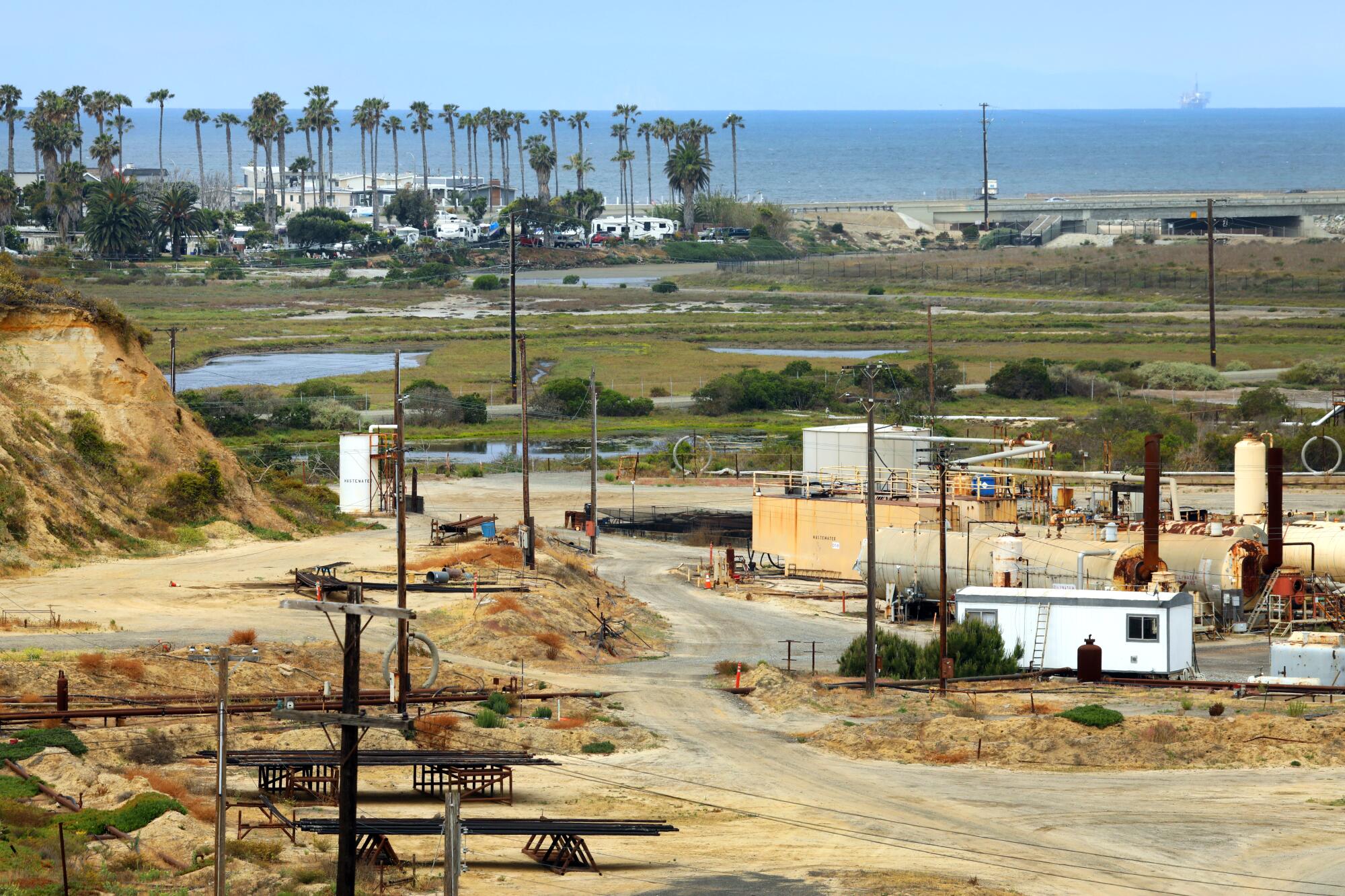
Although adjacent to some of the priciest homes in Southern California, about half the population within an hour’s drive of the property is considered low-income, and a third of those residents live in park-deficient communities.
Supporters of the ranch project include Democratic Assemblywoman Cottie Petrie-Norris of Laguna Beach, Orange County Supervisor Katrina Foley, UC Irvine and the Nature Conservancy.
“This is a special and logical once-in-a-generation opportunity,” said Petrie-Norris. “Surrounding underserved communities deserve this jewel.”
“So, we are pushing on every possible lever we have to make that $47-million goal a reality and bring the promise of Banning Ranch to fruition,” she said.
That includes requesting $5 million from the California Natural Resources Agency.
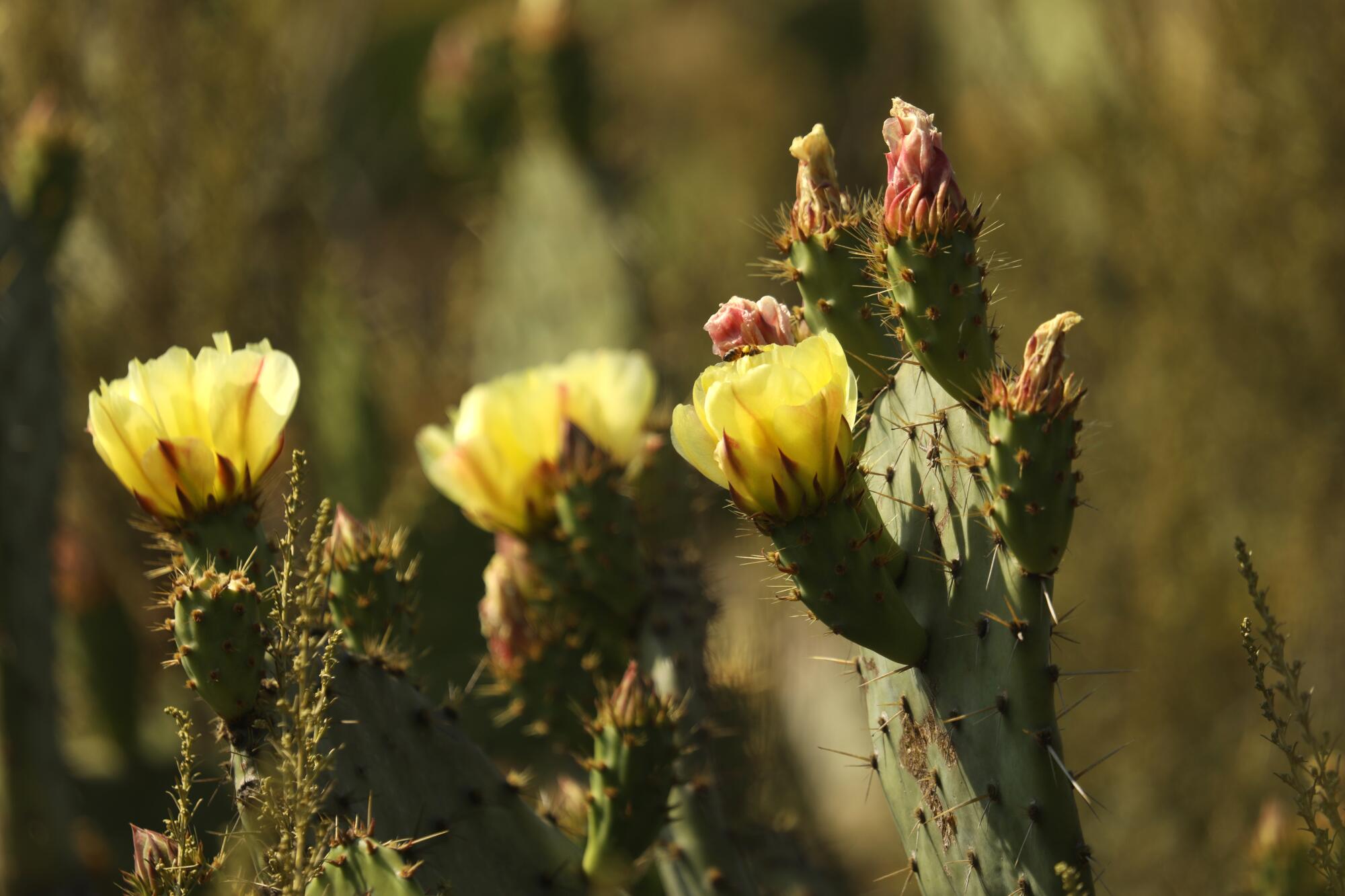
The property has been appraised at $97 million — provided it has been remediated, the Trust for Public Land said. The purchase agreement is predicated on the landowner doing so.
Keith Maley, a spokesman for the trust put it this way: “The landowner is footing the cleanup cost, and we’re paying them for clean property.”
The agreement with the trust comes two years after Frank and Joann Randall surprised the Banning Ranch Conservancy with their $50-million gift, seeding the conservancy’s acquisition fund to try to keep the property at Newport Beach’s western edge as a nature reserve.
Frank Randall, a former real estate broker who turned 91 on Earth Day this year, visited the ranch for the first time in February — and liked what he saw.
“I asked Frank, ‘What would you like to see here in five years?’” Rodriguez recalled.
Pausing to collect his thoughts, Randall gazed across a plateau overlooking an exclusive Newport Beach enclave.
Moments later, he smiled and said, “If I’m still around then, I’d like to see kids and families enjoying the natural beauty of this place.”
All the latest on Orange County from Orange County.
Get our free TimesOC newsletter.
You may occasionally receive promotional content from the Daily Pilot.
